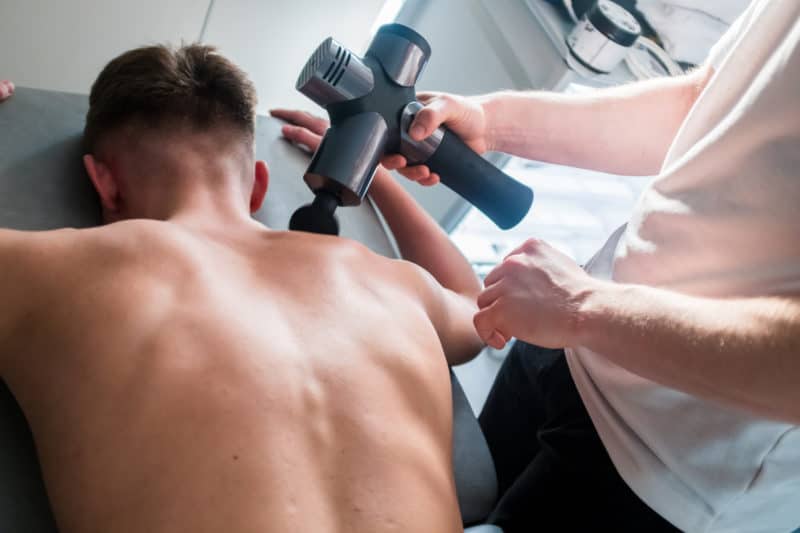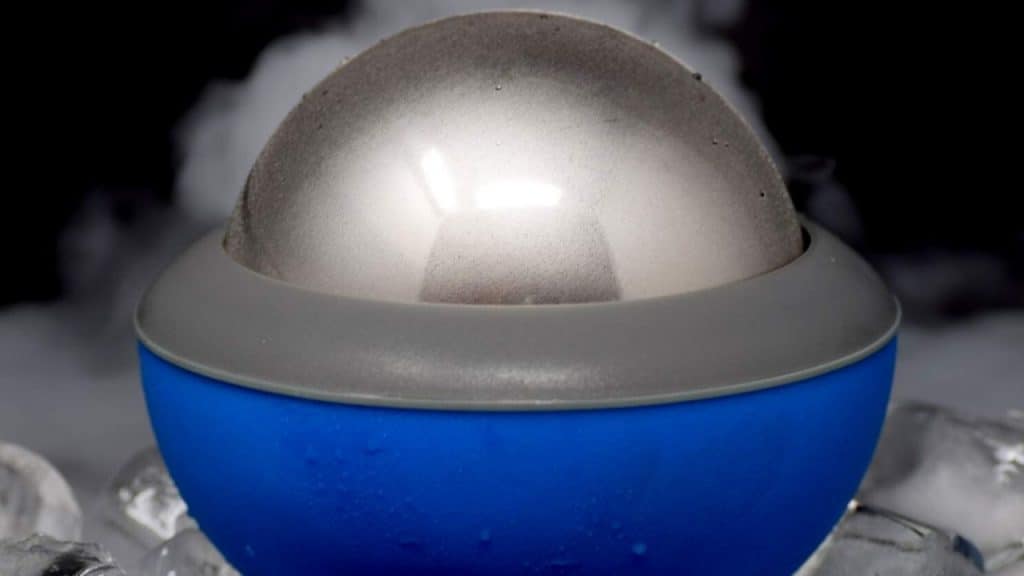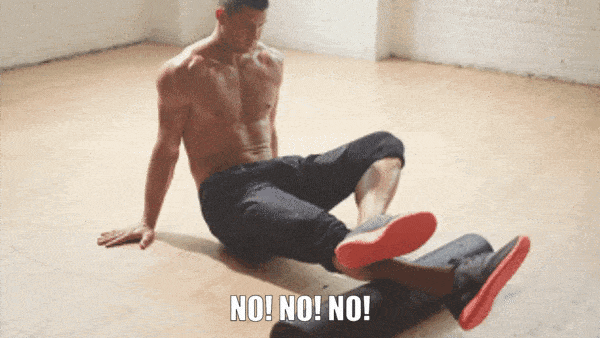We’ve all pulled a muscle at some point. This can include straining your lower back, tweaking your neck or pulling your hamstring. Some are more serious than others, yet they all involve throbbing, sometimes sharp pain, and need treatment in one form or another.
If you’ve got a mildly strained muscle, the recommendation has generally been rest, ice, compress, elevate (RICE). If your injury is more severe, it may require medical treatment, even surgery.
But, when your back is throbbing and you are laid out on the couch at home, don’t you find yourself craving a good massage to ease the pain? Sure, you may say, but should you massage a pulled muscle?
What Is a Pulled Muscle?
A pulled muscle, also known as a muscle strain, is an acute injury that happens when a muscle is overstretched or torn, usually following overuse, improper use of the muscle and/or fatigue. While they can happen with any muscle, most cases occur in the lower back, neck and hamstring.
A muscle strain is different from a sprain, though both involve acute pain. A strain, on the other hand, is an injury to a muscle or to the connective tissue that attaches muscle to bone. If you do not give your injury proper healing time and treatment, it can lead to chronic pain.
While RICE and medical treatment are the common prescriptions, should you massage a pulled muscle? For years this has been a debate between professionals. Here’s what they are saying.
Should You Massage a Pulled Muscle?
When you injure a muscle, the area becomes inflamed as it’s flooded with substances called cytokines, which are made up of proteins, peptides and glycoproteins.
Cytokines exist naturally within the body, and their primary function is to control the growth and activity of immune system cells and blood cells. They are in charge of telling your immune system to get to work when you’re sick or injured. The results show that muscle does in fact heal faster and stronger after massage.
The Study
Publishing their findings in the latter part of 2021, the researchers began exploring the effects of mechanotherapy — mechanical therapy — several years ago, working on injured tissue damage in mice.
They worked with a soft robotics team from Harvard Biodesign Lab to create a special, mouse-sized massage gun that would monitor and control the amount of force exerted.
After testing the device in a number of ways, what they found is that muscle regeneration and reduced tissue scarring was twofold in the mice who received mechanotherapy treatment versus the ones who didn’t. This test spanned two weeks.
The Outcome
As you can imagine, they were excited about this outcome but needed to figure out why this had happened. They ran tests and studied the outcomes and realized that the massage gun had helped to clear out some of the cytokines, as they were dramatically lowered after three days of treatment.
More specifically, they noticed that cytokines that are related to neutrophils were significantly decreased, and as a result, neutrophils were decreased as well. Neutrophils are white blood cells that are largely involved in the inflammation process, and they destroy and clear away pathogens and damaged tissue. However, they need to move on for regeneration to take place.
So, the fact that the cytokines had dispersed meant that the neutrophils had completed their work and cleared out, leaving the regenerative cells to do their thing.
The team decided to find out how long neutrophils needed to work their magic. After running additional tests, they learned that providing massage on the third day was the optimal amount of time. In the treated mice, they found larger muscle fiber size and greater strength recovery as compared to the untreated mice.

What Does It Mean?
These results not only verify what proponents of massage have long thought, but they also encourage the use of massage in ways and areas that many experts had previously dismissed. Conor Walsh, one of the experts at the Harvard Biodesign Lab, had this to say:
“These findings are remarkable because they indicate that we can influence the function of the body’s immune system in a drug-free, non-invasive way.”
For many years, critics of alternative therapies like massage have doubted the effects on the body and the healing process. While many studies have attempted to figure out if there is a positive connection, this is one of the first that really tells us how helpful massage can be for muscle injury and healing.
This is incredible evidence as to why and how massaging a pulled muscle is helpful. However, it’s important to discuss with your massage therapist, physical therapist and other health professionals before you adopt massage into your early healing process.
There are still things to learn and understand, and you don’t want to risk further damage because you missed something.
Don’t Overdo It
Longer time under pressure doesn’t equate to better recovery. You want to loosen up the muscle and get the blood circulating, and a massage gun is powerful enough to do what needs doing in a matter of two to three minutes.
If you use a massage tool like a percussive massager, talk to your massage therapist about how to use it properly and effectively.
Using massage to reduce inflammation and speed up healing doesn’t mean that you’ll be ready to get out there and engage in physical activity again after a massage. The healing process still takes weeks, so go easy on it for a while and continue to use massage and other treatment techniques as recommended by your health professionals.
It’s also always very important to communicate any medical conditions that you have or medications you’re taking to your RMT (registered massage therapist), as they can adjust their approach, teach you techniques to use your massage gun and provide you with information to keep you safe and healthy.
As an example, if you take blood thinners for clotting, you need to entirely avoid using your massage gun. In the same case, a Swedish massage would be more appropriate than a deep tissue massage.
Bottom Line
As we’ve outlined above, the answer to “should you massage a pulled muscle” is yes, with the guidance of a health professional.
Whether you tend to get sports injuries or put too much pressure on your muscles at work, it’s important to take care of your body and always use proper form and technique so that acute pain doesn’t become chronic pain.
Still, if and when you do pull muscle, it is nice to know that your massage treatments are indeed effective.


